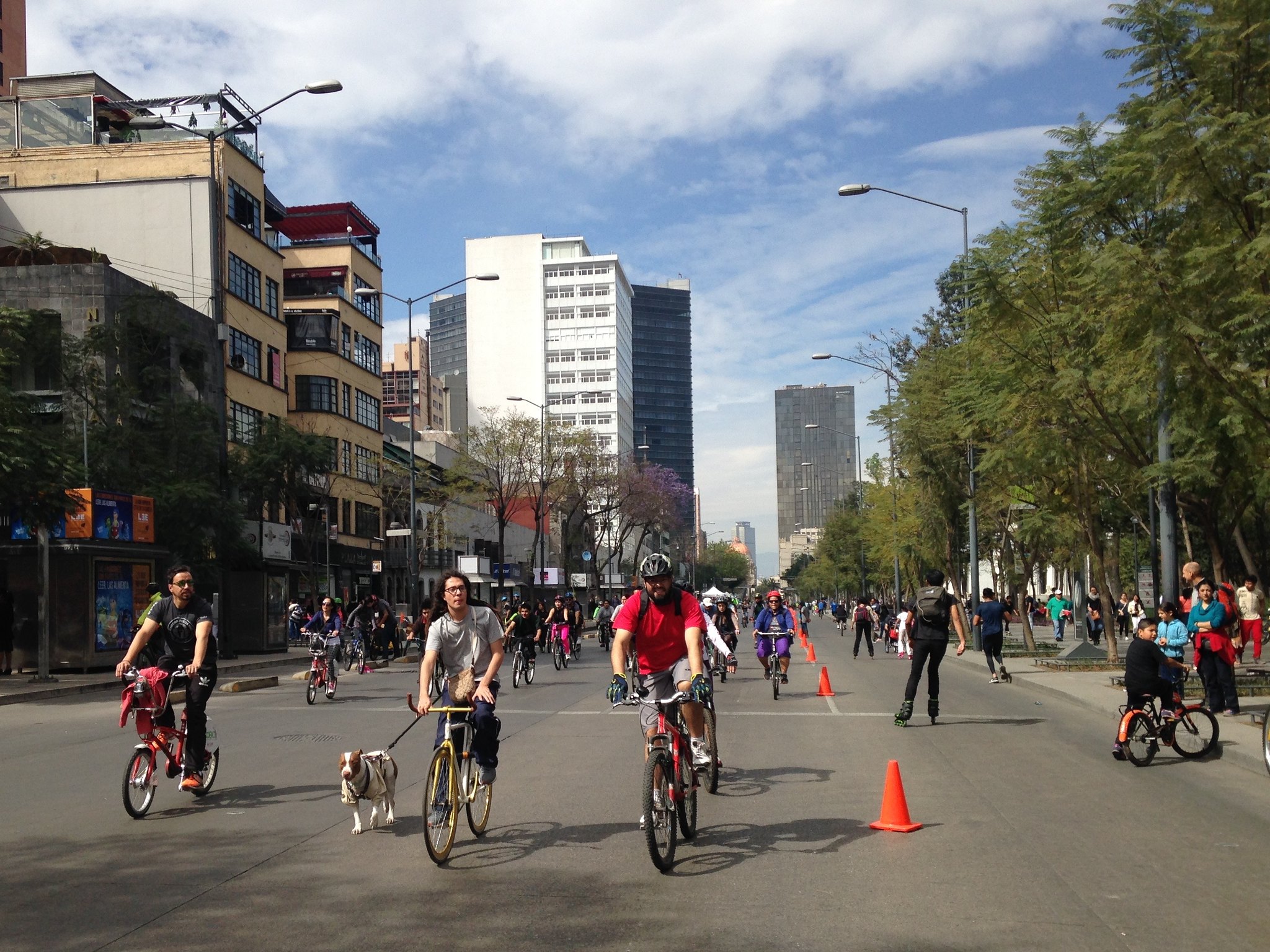Para leer este artículo en español, haga clic aquí.
Often we hear people talking about great walking, biking, and transit infrastructure and culture in European countries as being the best in the world. Famous bicycle boulevards and crowds of people on bikes all over the streets are what these countries are known for. Very few non-European cities, especially in Latin America, ever make the Most Bike-Friendly Cities on the Planet lists. More often than not, the images of cities in the Global South that come up in movies and TV are dirty, poorly maintained, unsafe, polluted, and overcrowded places. Rarely, do we see pictures of the gigantic pedestrian plazas and rapid-fire subway trains. But every time I go back to Mexico City, I realize how walkable and bikeable the city truly is. I also realize how I never have to look at an app to find when the next train or bus is coming, because the next one is always a few minutes away.

Besides cycling, I am also really into rock climbing, so when I had the chance to visit Mexico City’s National Park, Los Dinamos, a few weeks ago, I jumped right in. This huge National Park not only lies within the city boundaries, but you can bike to it. I wasn’t aware that this park existed, because although I am from Mexico City, the city is so large, it takes people years to get to know and explore the city to its full extent. As my family drove from Estado de Mexico into Mexico City so we could take public transit to the entrance of the park, I saw several new projects in the city.
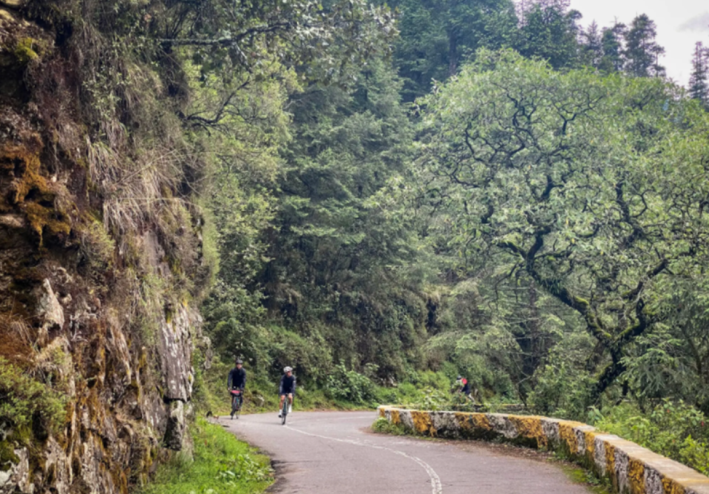
First, as we drove out into Mexico City, I noticed the Cablebús, which launched in 2019. The Cablebus is an aerial tramway that serves as public transportation for low-income communities in certain parts of the city but will soon be expanding. This tramway is not the first in the country. In 2016, Estado de Mexico created the Mexicable to reduce transfer times for several municipalities in the state.
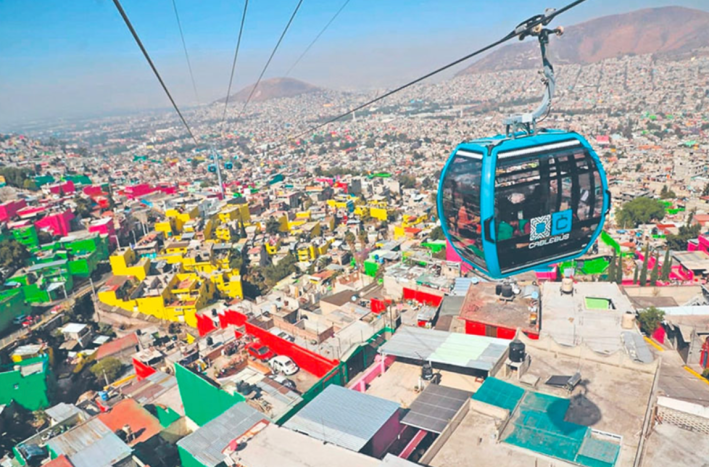
As we kept driving, we encountered several major roadways within the city limits that were closed to drivers and open for walking, jogging, skating, and biking. When I asked my family what was happening, they said every Sunday morning and afternoon, the city pedestrianizes major streets. Although I knew this happened, this ciclovía/open streets project is one I had rarely read about and it is impressive how much it has developed in the past 14 years. This connected system averages 50,000 people in one Sunday.
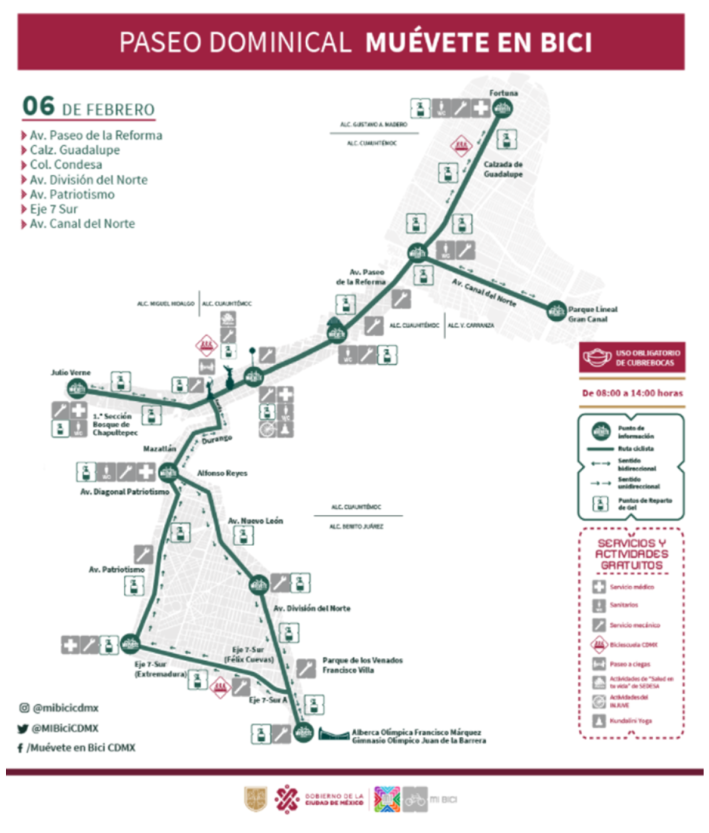
The objectives of this program called Paseos Dominicales Muévete en Bici y Paseos Nocturnos are to increase physical activity for health and wellness, to promote public education on cycling, including allowing people to build the confidence to use a bike as a mode of transportation, and to promote the use of bicycles as a sustainable form of transportation and recreation. It is run by the Ministry of Mobility, but it started under the Ministry of Environment of Mexico City in May of 2007, initially pedestrianizing one of the major streets of the city called Paseo de la Reforma. The original route was 6.2 miles. In 2014, as Chicago ended its Open Streets program due funding issues, Mexico City kept adding more and more streets to theirs. Today, the program includes over 31 miles of the city. This practice is not only found in Mexico City; Other Mexican cities like Guadalajara, Mérida, and Puebla also also hold ciclovías.
In addition to the expansion of the program and the expansion of bicycle lanes by the Mexico City government that have undoubtedly increased biking in the city, I noticed new electric bikes on the streets. These e-bikes do not belong to the city-owned bike sharing program Ecobici, which launched in 2010 and has electric bikes since 2017.
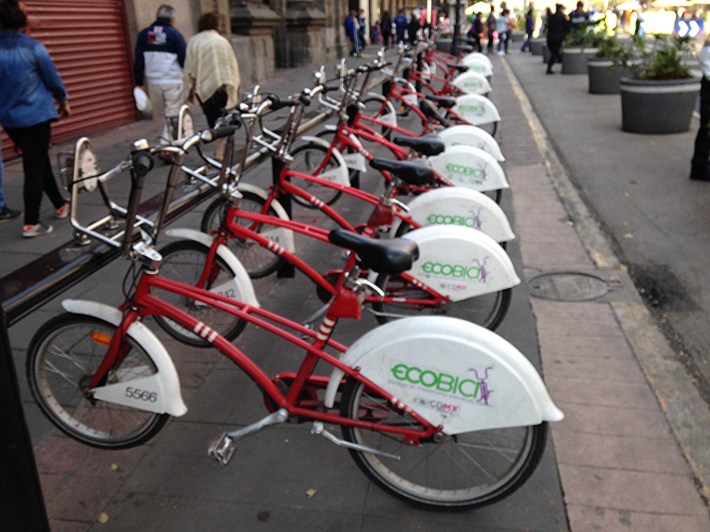
These new e-bikes belong to a Mexican startup company called DEZBA, which began releasing e-bikes in Mexico City in 2019, alongside Uber’s JUMP e-bikes. Today, DEZBA ebikes is the only other e-bike-share program that legally operates in the city, although the system is limited to just a few neighborhoods. However, there are several other companies that have introduced ebikes since the pandemic began. Ecobici will also be expanding stations and bikes at the beginning of 2022 through 2024. It will be interesting to see when e-bikes begin to become a more common mode of transportation in the city.
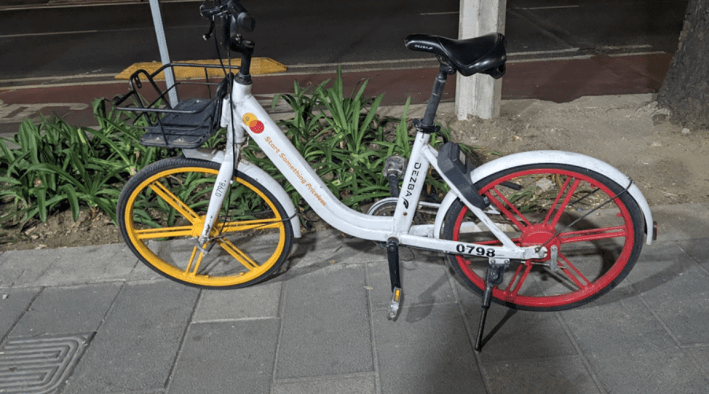
In other good transportation news, I learned that in 2018 Metrobús, the fast, reliable bus rapid transit system had expanded, adding a 7th line to its system, as well as added double-decker buses to its fleet to serve more people. Metrobús, which operates almost like a train, has helped ease commutes and congestion for the past 17 years. It is estimated that 1.8 million people use it on a daily basis.
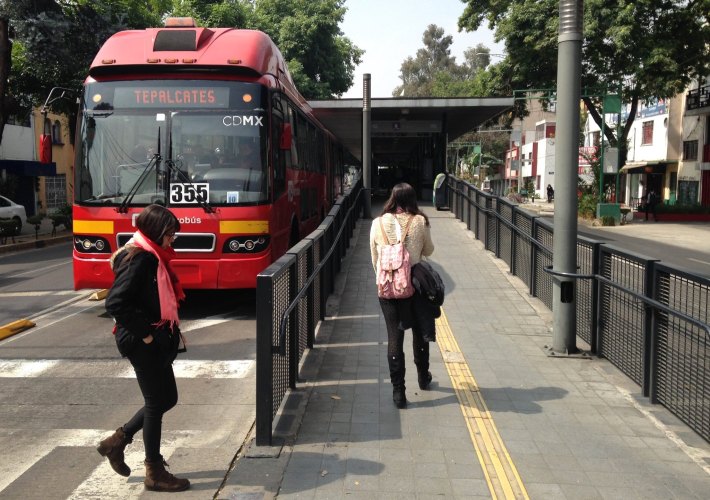
The Mexico City Metro is still in need of improvements, upgrades, and expansion. Last year, a Metro overpass collapsed due to construction deficiencies that caused structural failure, killing 26 people and injuring 79 others. This tragic incident revealed the inequality in access to safe and efficient infrastructure for certain communities. With modernization projects in the works, and a train that will connect Mexico City to Toluca, the capital of Estado de Mexico, the government is vowing to improve construction and safety standards.
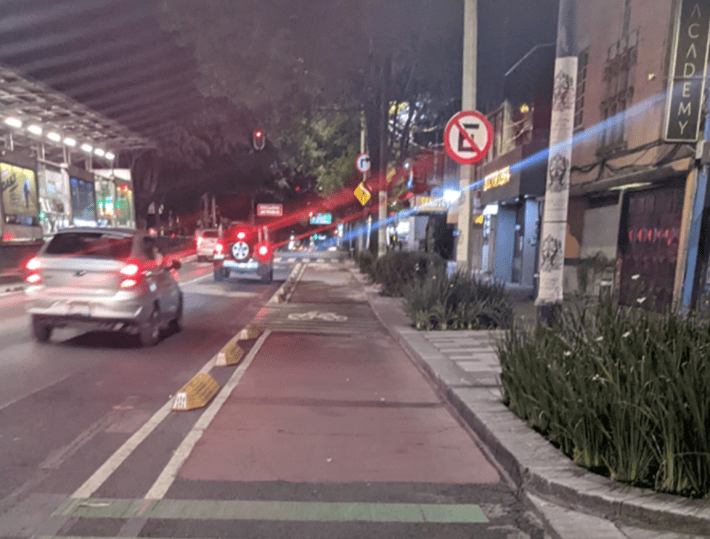
There are many issues that still need to be addressed to truly safe, equitable, and efficient transportation in Mexico City. However, it's way past time for the urban planning world to stop overlooking the many successes of Latin American cities like Mexico City to find innovative ways to improve walking, biking, and transit.
